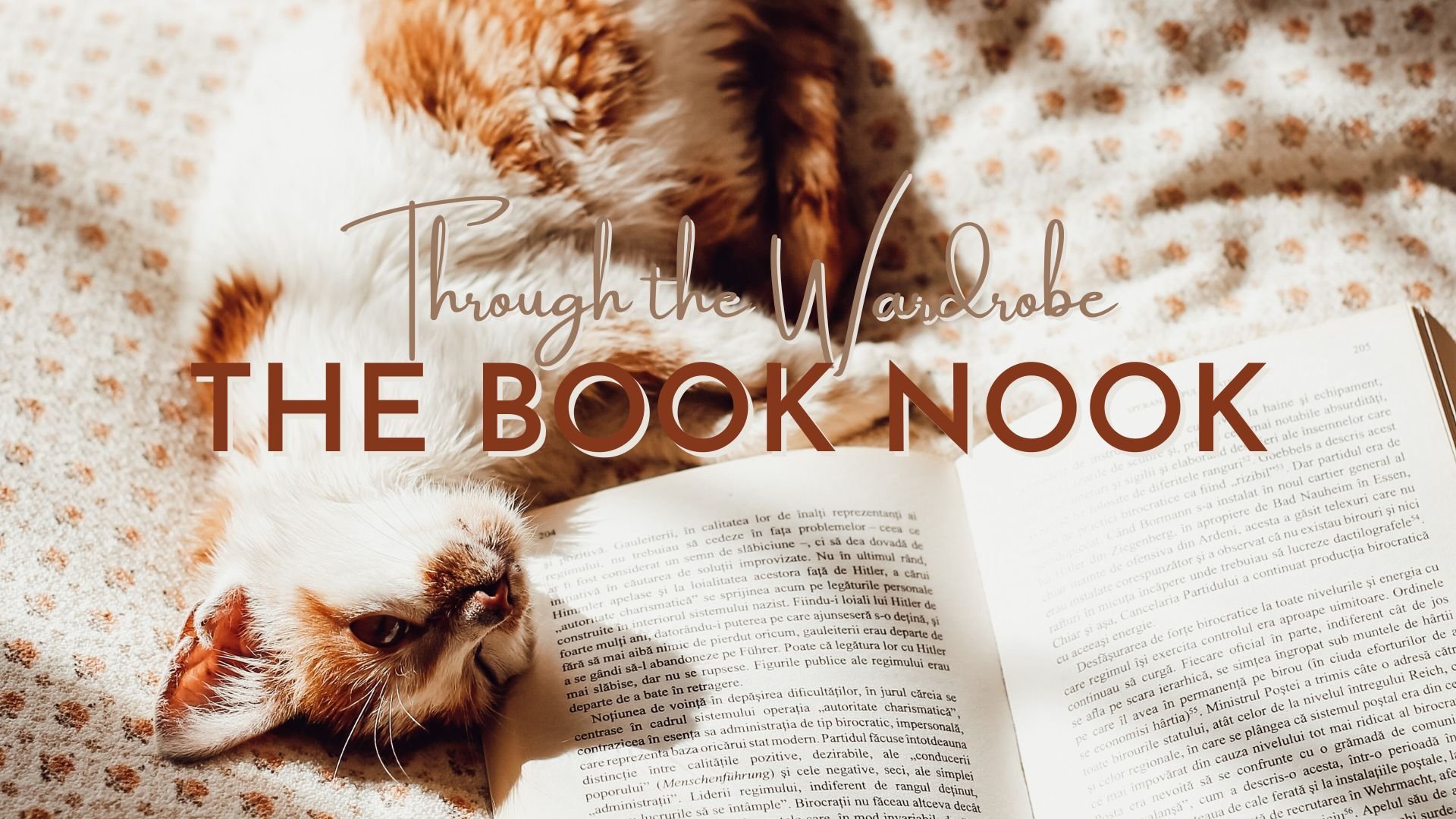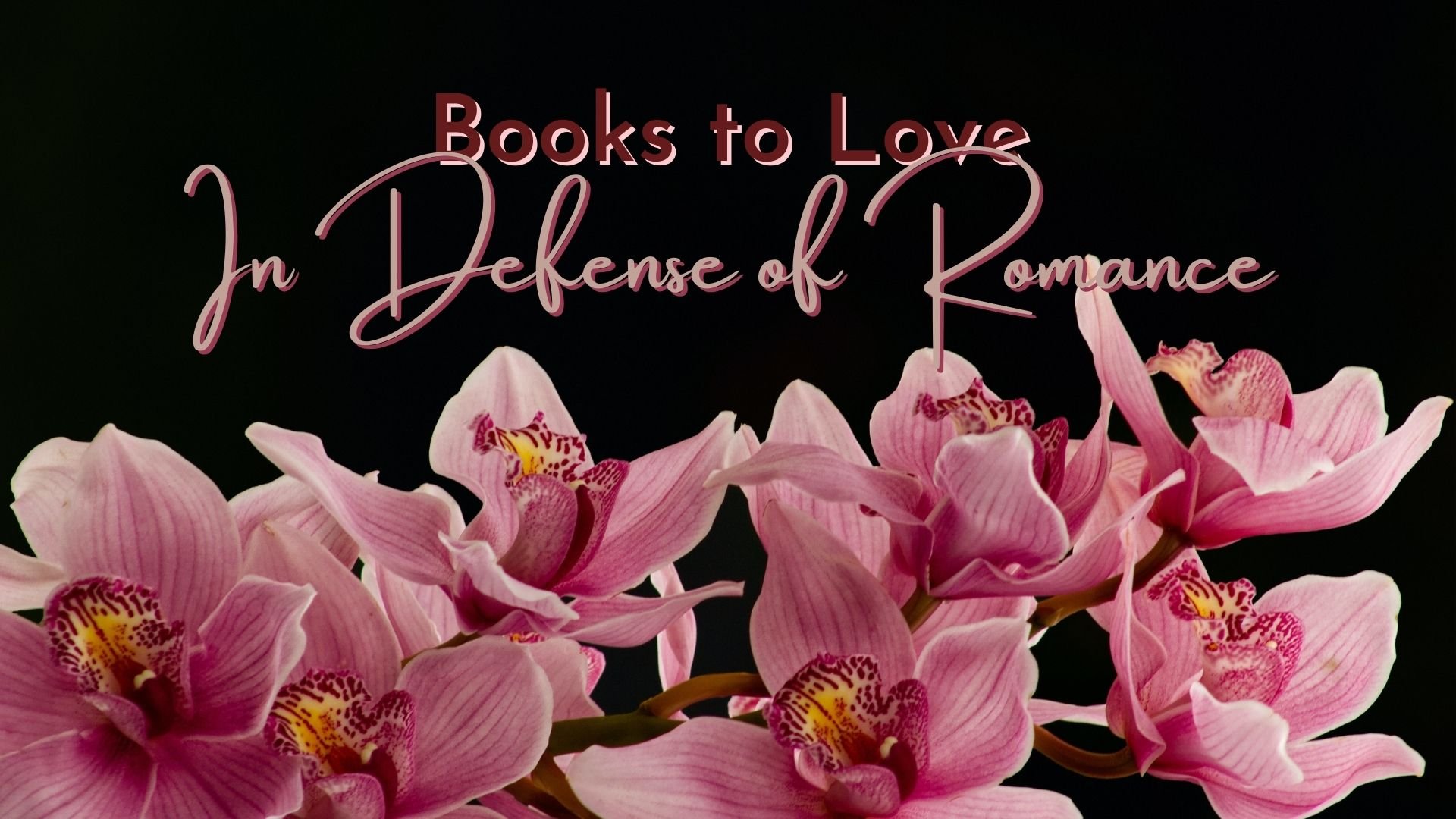Books to Love: Just Like Jane
The title of today’s blog has gone through several versions. It came down to two titles that I liked. For the longest time, this post was called A Subtle Farce. I toyed with this title because these books are each comedic dramas that do include absurdities, but as I wrote out my thoughts on each novel, I found that while there is absurdity and even buffoonery, they captured too much of what ordinary mortals struggle with to be relegated to farce.
That’s why I settled with Just Like Jane because the books I’m recommending today are slightly more akin to Jane Austen’s style than an actual farce.
One of the aspects Austenites love about Jane is her witty, pithy, humorous, and tender observations of people in her novels. She is both able to disarm the reader with characters that take residence in our hearts in spite of their foibles as well as leave us laughing or annoyed or infuriated at others.
Where she does not pull her punches is in her overarching observations of society, particularly hypocrisy, inanity, and silliness. She is not mean, just painfully honest, and we appreciate and love her for that, too. And she always keeps the context relatable. The situations and events that transpire are ones which even we today can relate to.
The books I am sharing with you today are just like Jane in that they offer keen observations of the people around the main characters. It seems that Oliver Cromwell’s clout preceded him, for just as he advised his portraitist Sir Peter Lely to paint him warts and all, Austen and the authors I share today do precisely that. The result, just like with Jane, is wonderful humor, amusement, and, even, chagrin.
For as Jane herself wrote:
“For what do we live, but to make sport for our neighbors, and laugh at them in our turn?”
Miss Buncle’s Book
D.E. Stevenson
“I never really thought or believed in my bones that the book would be published. I just finished it and sent it up—”
“And why to me?” inquired Mr. Abbott with much interest. “I mean why did you send the book to me? Perhaps you had heard from somebody that our firm—”
“Oh, no,” she exclaimed. “I knew nothing at all about publishers. You were the first on the list—alphabetically—that was all.”
Mr. Abbott was somewhat taken aback—on such trifles hang the fates of bestsellers!”
In keeping with my loosely held resolution for 2022, I have been exploring new authors. D.E. Stevenson was wholly unfamiliar to me, and, dear readers, I cannot believe I have lived this long upon the earth without having encountered her sooner. Her works are simply delightful.
Not to give anything breathtaking away, but D.E. Stevenson’s novel Miss Buncle’s Book is about Miss Barbara Buncle and the riotous upheaval that ensues when she writes and publishes a book. Never in Barbara Buncle’s imaginings did she ever think that she would write a book. In fact, Barbara would say that one of the reasons she never would was because she doesn’t have an imagination.
However, needs must when the devil drives. After a significant financial loss (this book was published in 1934, a scant few years after THE Crash of ’29), Barbara finds herself in a bind. She needs money and she needs it quickly. That’s when she decides she will write a book. After all, there are not many courses open to a gently bred woman. She sits at her desk and she begins the lugubrious task of coming up with a plot. However, being that she is entirely unimaginative, she settles with recording what she sees transpire around her in the quaint, quiet English village of Silverstream.
Of course, she changes all the names of the people and the places. However, being a keenly observant woman, she recounts with accurate precision the character and actions of those around her. Then, one morning, something happens. An idea pops into her head for the plot of her plodding novel and with this idea, the entire course of the book shifts and mayhem is unleashed.
When Barbara Buncle mails her novel to a publishing house under the nom de plume John Smith, it captures the attention of Mr. Abbott. He sits down to read it and finds himself entirely absorbed in the narrative. He cannot decide whether the author is being witty or pedantic. Then, when he encounters the plot twist, he finds himself entirely carried away. He must publish the novel.
He sets up a meeting with John Smith, and is all the more surprised when he finds a woman on his doorstep. After his interview with her, he is even more perplexed for she insists that she has no imagination nor is she a good writer. She also has a series of misgivings about the fact that she patterned so much of her novel after the place she lives and the people there. Mr. Abbott soothes her mind on that score with the notion that the novel could be patterned after any number of English villages. And when he hands her the advance on her novel, those misgivings seem paltry.
But, nothing can prepare Barbara or even Mr. Abbott for the mad hornets’ nest that her small novel disturbs. With the publication, the book hits the best sellers list and the people of Silverstream get a good look at what someone else thinks of them and their antics. Barbara is left to wrestle with the bruised egos and battered feelings of her neighbors all while remaining incognito.
The quest is underway in Silverstream to unmask the man who has written Disturber of the Peace. What his fate may be, well, you’ll just have to read this charming novel to find out.
Miss Buncle’s Book is reminiscent of Jane Austen, as it possess that keen, witty, and sometimes caustic observation of people. Yet, this book also seems to fit in the category of Cold Comfort Farm or I Capture the Castle. And while a woman in her thirties can’t really be clumped in with a coming of age novel, Barbara Buncle’s metamorphosis is quite the thing to behold.
If you are looking for a novel to to cozy up with, I highly recommend this book. Miss Buncle’s Book is a novel that embraces a slower-pace than the typical novels of today, but within it’s old-fashioned plotting, you will find vignettes that make you smile, chuckle, and laugh in turn. And, at the end, you will feel satisfaction that, as Oscar Wilde says,
“The good ended happily, and the bad unhappily. That is what Fiction means.”
The Blue Castle
L.M. Montgomery
“‘Fear is the original sin,’ suddenly said a still, small voice away back—back—back of Valancy’s consciousness. “Almost all the evil in the world has its origin in the fact that some one is afraid of something.”
Valancy stood up. She was still in the clutches of fear, but her soul was her own again. She would not be false to that inner voice.”
When one finds an author whom one loves, it is always a good rule of course to give heed to the different book suggestions and personal favorites of said author. I personally have discovered a wealth of wonderful titles via this method. The Blue Castle by L.M. Montgomery is one such book.
If you’ve read any of the numerous posts I’ve written that have included mention or been exclusively devoted to the author Lauren Willig, then you will know that it has been my privilege and pleasure to have met and spoken with her on several occasions. I cannot remember whether it was on one such occasion or whether it was a post she put up on her Instagram account (which I encourage you to follow as she’s always a fount of information regarding good book recommendations as well as the writing process and other literary topics), but I know she mentioned The Blue Castle.
Now, it was not on her recommendation alone that I went to my local book shop and purchased a used copy to stack upon my To Be Read pile. L.M. Montgomery created one of my all time favorite literary characters in the precocious, imaginative Anne Shirley. So, when Willig said she loves this standalone book by Montgomery, I concluded that I must read the book.
Unfortunately, the best laid plans and all that, The Blue Castle has moldered on my TBR pile for simply years. This year, however, something has kindled within me and I am prodigiously plunging through my TBR pile, trying out new authors and rediscovering ones whom I had forgotten where simply wonderful.
L.M. Montgomery’s style is at once comedic, biting, witty, and sentimental. She speaks a great deal of truth in her prose and her characters are both archetypes as well as individuals. In this, she is not unlike Jane Austen.
The heroine of this slim novel is Valancy Stirling, a woman 29 years of age, who has spent the whole of her life living up to the stringent and repressive expectations of her inexhaustible relations. Her mother and aunt rule the household in which she lives with an iron fist that quite frankly squeezes all the joy out of life. Her extended family are always within ear shot to deride, ridicule, and make fun of her single status in life as well as extol their horrid opinions of everything under the sun in stentorian voices that broker no argument.
Valancy has lived her life as a mouse, which quite honestly made it rather difficult for me to make progress into the start of this book. (Have no fear, dear reader, the wading is well worth it.) She plods through each day with joyless progress, obeying every dictate given her by her mother. She cannot even rent a novel from the library as her mother deems them improper to read. There are only two things within which Valancy derives true pleasure- the nature books written by the reclusive, mysterious John Foster and the Blue Castle.
The Blue Castle is the imaginary world Valancy has conjured up. The situation of this grand castle is in the mountains of Spain. The woodlands and gardens she has landscaped to perfection. The temperature is always perfect at all times of year. The castle itself possesses all the comforts Valancy would have in her real life. And, perhaps most importantly, in the realm of the Blue Castle, Valancy is no longer a plain, unappealing woman, but a great beauty at whose feet the most noble, genteel gentlemen have knelt.
Of course, this aspect of Valancy’s escapist imagination put me in remembrance of Anne of Green Gables, who kept her dear friend Katie in the looking glass, and spoke with her when the weight of the world could no longer be born in silence. This kinship between the characters was the impetuous I needed to plod my way through the first several chapters of utter despair and frustration.
Valancy’s relations are insufferable. Indeed, I would recommend a thorough reading of the book prior to any Thanksgiving dinner in order to help put the ills of our own relations in perspective. As The Blue Castle shows, it could always be worse.
The novel opens on Valancy’s birthday. She is now 29 years of age and thoroughly on the shelf, as those busy bodied mamas would say. No man has ever shown her a modicum of interest. Furthermore, as Valancy dismally recounts all the failings of her youth and the desecration of her hopes, we get a clear picture that the restrictive life she’s led has brought her to the depressing moment when we meet her.
As one would expect, it is raining on her birthday, because Valancy cannot catch a break. However, she’s happy for the rain as it gives her the opportunity to walk into town to go to the library. She’s hoping to rent another John Foster book and lose herself within his magic world of nature. There’s also another errand she wants to run; one which she wants to keep secret from the rest of her nosy family.
Valancy has been feeling an oddity around her heart. It comes and goes. There are slight spells when it happens. But she wants to see the doctor in town- of whom her relations do not approve- because he happens to be a specialist when it comes to the heart.
However, when Valancy is granted a meeting with the doctor, he examines her, asks a series of questions, and before he can deliver his diagnosis, he is called away in a matter of supreme urgency that sees him hightailing it to the train station as mad as a hatter. Valancy almost laughs at the irony. Why should the doctor care about her, or even remember that he left her in his exam room? She’s just that sort of person. A wall flower. The girl who everyone walks by and no one sees.
However, the next day sees Valancy receiving a letter from the doctor with an apology for his hasty departure and a diagnosis that upends Valancy’s staid world. She is dying. At the most, she has a year to live.
This decree has the oddest effect on her. Rather then share the tragic news of her short, uneventful, unlived life coming to an abrupt end, she decides to live the days left to her. She begins by speaking her mind. Rather than kowtow to the bidding of her beldam of a mother, she simply explains that she will no longer participate with the hours of quilting or the other pedantic, inane trivialities she’s been forced to fill her life with. Then, at a large family function, where all of the relatives are gathered, Valancy’s new found spine grows more rigid. When the relations en masse begin to slander and gossip about the misfortunes of one of the ‘undesirable’ members of their small community- Valancy finds herself not only defending this erstwhile drunk and his disgraced daughter, but later, visiting them in their dilapidated home. From there, Valancy makes another break.
Since these people are in need, she will do for them, as in take care of the housekeeping, the cooking, and, most importantly, sitting with the invalid daughter. Valancy remembers her from her youth when they were at school together. The tenderness and friendship she felt there in its early stages never was given the chance to flourish, but now, Valancy has a true friend. And though the prim and propers of society would frown upon this unfortunate young woman for the sins she’s committed- namely bearing a child out of wedlock and having the temerity to mourn his loss, Valancy awakens into a deeper Christian charity born of compassion and understanding.
The story does not possess too many twists and turns, but is rather more akin to the gentle growth and ultimate blossoming of a peony. Beginning with the tightly wound, hardened green bud, it slowly deepens in color, gradually unfurls its petals, until suddenly you behold this magnificent flower whose beauty, allure, and weight (as it is so heavy it will bend its branches if you don’t trellis it) is undeniable. That’s the budding and blooming of Valancy Stirling and her tenderhearted story.
I would venture that this book was largely intended for young girls between the ages of 12-15 to read. However, sometimes it is a wise thing to revisit the books from our youth to uncover the simply, plain truths written in their pages. The Blue Castle is straight forward. In today’s society, it might be considered on the nose. The plot is transparent as is the ‘moralizing’ if you wish to call it that. However, the manner in which Montgomery writes- the whimsical, witty, lyrical, romantic manner will ingratiate its way into your heart. Indeed, as I write this, I recall Cinderella’s wistful singing: A dream is a wish your heart makes…
The Blue Castle is about that wish made deeply in the heart and the fulfillment thereof. I am grateful to Lauren Willig for the recommendation, so much so, that I had to pass it on.
Each of these books are older publications. Their prose may feel a little archaic compared to the pacing in modern novels. However, while the unfolding my take a little more time, there is richness in the narrative that will both touch your heart and make you laugh. These novels are lighthearted, too, which makes the reading all the more enjoyable.
Each book may seem to be geared toward a younger audience, yet I have found great pleasure of late making the acquaintance of them. There is a genuine simplicity in them that serves as a reminder that not all great story telling requires complexity of plot. Sometimes it’s just stark honesty that captivates a reader. Stark honesty, a dose of genuine humor, and a little bit of heart makes for excellent reading I’ve found. It’s the receipt Jane used time and again, and if it worked for Jane Austen, then it’s a good receipt indeed.
What books have you read that you feel are just like Jane? Please take a moment and share them with us in the comments below or on Whiskers’ Instagram or Facebook pages.













































